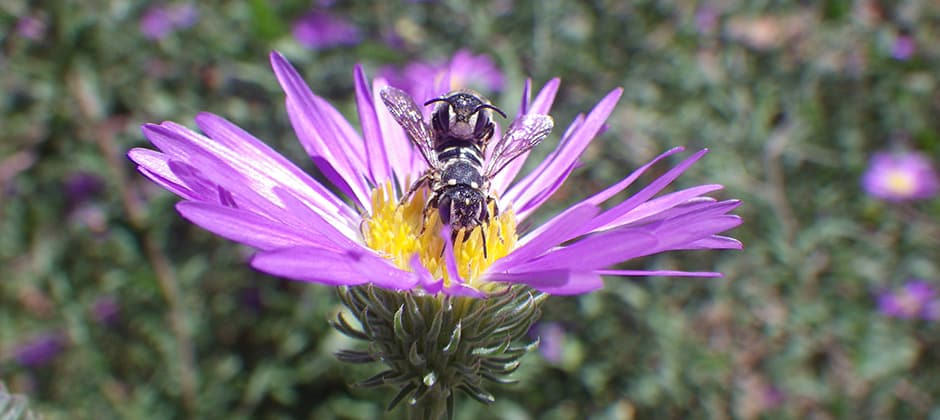Share this article
Mapping bee species first step toward understanding declines
After mapping bee species worldwide for the first time, researchers found that unlike other wildlife, there’s less bee species richness near the equator and higher diversity in deserts.
“We wanted to create the first modern map of bee species richness, because we need to know where bees live to conserve them,” said Michael Orr, a postdoctoral fellow at the Institute of Zoology at the Chinese Academy of Sciences and lead author of the study outlining these maps published in Current Biology. “This is an important first step for that, and in the future we can begin working more on threats to bees such as habitat destruction and climate change, and to better incorporate pollination services into ecosystem service analyses.”
Because they were looking at bee species globally, Orr and his colleagues needed collaboration from individuals around the world. “Collaborating from afar can be difficult, but luckily the core team was very highly motivated, and we were able to meet and discuss in person during several conferences,” Orr said.
To create the maps, Orr and his colleagues compiled public data on the occurrences of individual bee species around the world, compared them with a checklist of over 20,000 known bee species and combed multiple datasets for all different geographic areas.
Collecting the data proved difficult in some areas, particularly in Asia and Africa where public data was hard to come by. After reviewing and modeling what they gathered, they found bees are unlike most wildlife species. Usually, species richness is greatest in the tropics and declines toward the poles. But Orr and his colleagues found that bees do better in dry areas, and they perform worse in humid areas near the equator. Their analysis showed bee diversity was also lower in woodlands and forested areas. “Bees are thought to have originally evolved in deserts, so it makes sense they would do well in more arid ecosystems,” he said.
Orr and his colleagues also determined that sunlight, water and plants are three of the most important factors determining where bees succeed. Sunlight, for example, is important for bee thermoregulation — spring bees prefer to fly when it’s sunny to get more heat. Water is important for plants that bees need, but it also works as a sign for bees to emerge. “In the deserts, many bees will wait multiple years to emerge, until there is a ‘signal’ from rainfall that tells them there will be enough flowers for them that year,” Orr said. Plants are important as well, providing pollen and nectar to feed their offspring.
Trees, however, can be problematic for bees. Many trees don’t flower, and they can block sunlight from reaching plants that do.
Understanding global patterns of bee diversity is important for their conservation, Orr said. “If data are incorrect or unrepresentative, then we might make the wrong decisions about where we should protect, or how to sustainably manage, landscapes,” he said. Areas are often protected based on their geological features alone, but Orr suggests protecting areas also based on biodiversity and species richness.
This is especially important as climates continue to change. “We do know that some bees will be more impacted by climate change, especially those which do well in colder climates and mountains,” he said.
Orr said he hopes his map gives researchers a first step toward helping imperiled bees. “Climate change poses a large threat to many species, but that’s going to be irrelevant if we don’t protect the habitats species need that are being destroyed now,” he said.
The maps are available to the public online at DiscoverLife.org.
Header Image:
Bees are less species-rich in humid areas, and they do better in dry areas, researchers found.
Credit: Michael Orr








